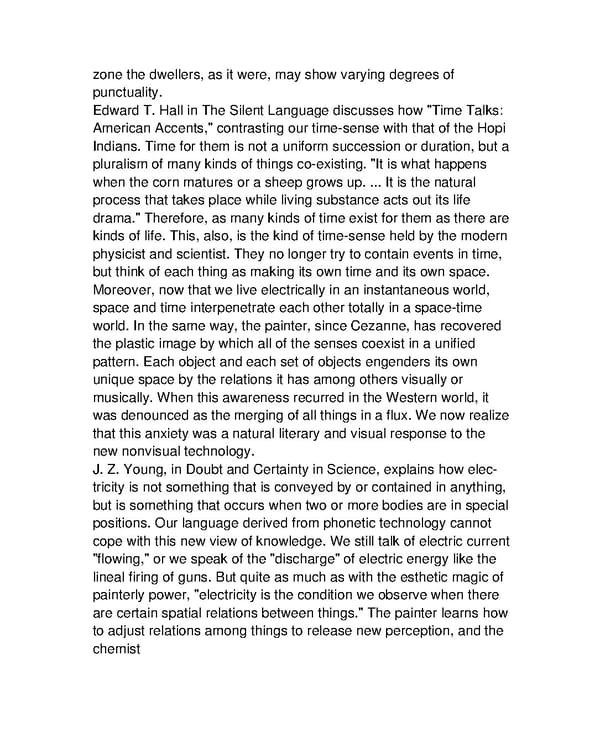zone the dwellers, as it were, may show varying degrees of punctuality. Edward T. Hall in The Silent Language discusses how "Time Talks: American Accents," contrasting our time-sense with that of the Hopi Indians. Time for them is not a uniform succession or duration, but a pluralism of many kinds of things co-existing. "It is what happens when the corn matures or a sheep grows up. ... It is the natural process that takes place while living substance acts out its life drama." Therefore, as many kinds of time exist for them as there are kinds of life. This, also, is the kind of time-sense held by the modern physicist and scientist. They no longer try to contain events in time, but think of each thing as making its own time and its own space. Moreover, now that we live electrically in an instantaneous world, space and time interpenetrate each other totally in a space-time world. In the same way, the painter, since Cezanne, has recovered the plastic image by which all of the senses coexist in a unified pattern. Each object and each set of objects engenders its own unique space by the relations it has among others visually or musically. When this awareness recurred in the Western world, it was denounced as the merging of all things in a flux. We now realize that this anxiety was a natural literary and visual response to the new nonvisual technology. J. Z. Young, in Doubt and Certainty in Science, explains how elec- tricity is not something that is conveyed by or contained in anything, but is something that occurs when two or more bodies are in special positions. Our language derived from phonetic technology cannot cope with this new view of knowledge. We still talk of electric current "flowing," or we speak of the "discharge" of electric energy like the lineal firing of guns. But quite as much as with the esthetic magic of painterly power, "electricity is the condition we observe when there are certain spatial relations between things." The painter learns how to adjust relations among things to release new perception, and the chemist
 Understanding Media by Marshall McLuhan Page 164 Page 166
Understanding Media by Marshall McLuhan Page 164 Page 166